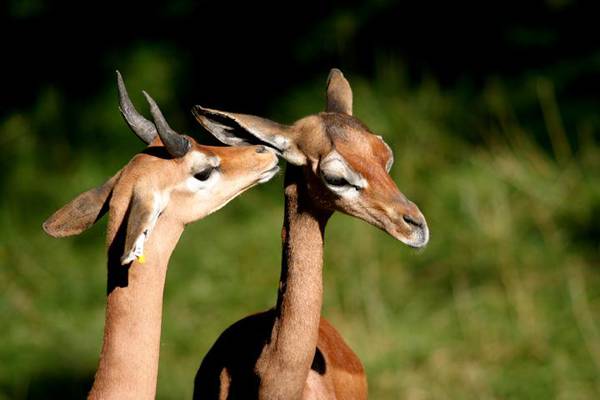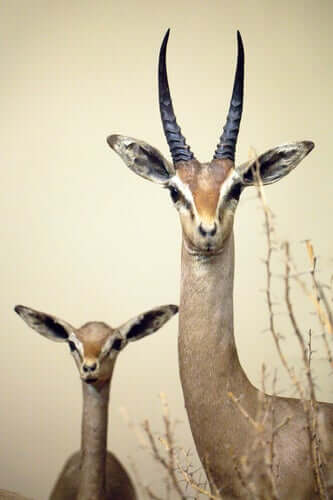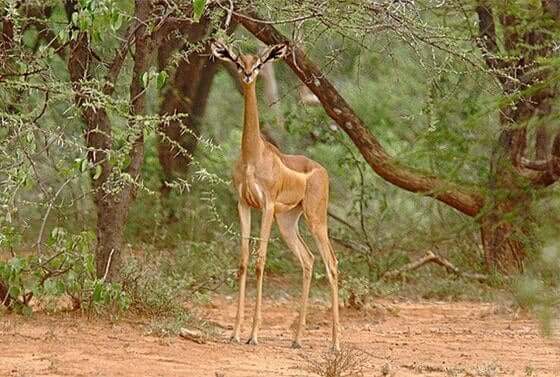The Habitat of the Dibatag (Clark's Gazelle)

The animal we’re going to talk about today is a rare creature from the Horn of Africa. Keep reading this article to learn about the dibatag, its habitat, and some of its characteristics!
General characteristics
This rare mammal (Ammodorcas clarkei) is the only animal in its genus. That means it’s the only species of its kind, and we haven’t seen any related subspecies yet. The dibatag was first discovered by the British zoologist Michael Oldfield Thomas.
It may be its own genus, but it’s still a mammal. It belongs to the Bovidae family (goats, sheep, etc) and its Antilopinae subfamily. This subfamily is the one all the species of antelope and gazelle we’ve discovered belong to.
Dibitags have a fascinating physical structure. Both their legs and neck are extremely long and thin. They have an average height of about 30 inches, and can weigh between 48 and 77 pounds. Most of their fur is grayish brown, except for a lighter color on their under and backsides.

Another of their interesting features is their long tail, which can be up to 14 inches long. Whenever they’re moving around quickly or running, it points straight out. Their horns are short and curve slightly forward, and are a feature specific to males of the species.
The habitat of the dibatag
The preferred habitat of the dibatag are sandy areas with lots of thorny brush spread around the ground. They tend to stay in these kinds of places and avoid rocky terrain.
Besides, they have access to all their nutritional needs there: buds, leaves, and perennial bushes. They also eat any herb sprouts they stumble upon during the rainy season. They can also stand up on their back legs to reach some of the best buds and leaves.

Dibatags don’t form large groups in their natural habitat. It’s rare to see one bigger than five. While the males are out on patrol and marking territory, females make sure to feed and protect their young.
Distribution and conservation
Until very recently, dibatags only lived in the arid regions of Ethiopia and Somalia. But, little by little, drought, over-hunting, and the destruction of their habitat has started to bring their population down to dangerously low levels.
Even though they’re very good at slipping away from danger, their population has continued to drop. On top of that, there are none in captivity. The International Union for Conservation of Nature (IUCN) has listed this species as “vulnerable.”
All cited sources were thoroughly reviewed by our team to ensure their quality, reliability, currency, and validity. The bibliography of this article was considered reliable and of academic or scientific accuracy.
- Heckel, J. O., Wilhelmi, F., Kaariye, X. Y. & Amir, O. G. (2008). Ammodorcas clarkei. In: IUCN 2010. IUCN Red List of Threatened Species. Version 2010.1.
- Meester, J. (1960). The dibatag, Ammodorcas clarkei (Thos.) in Somalia. Annals of the Transvaal Museum, 24(1), 53-60.
